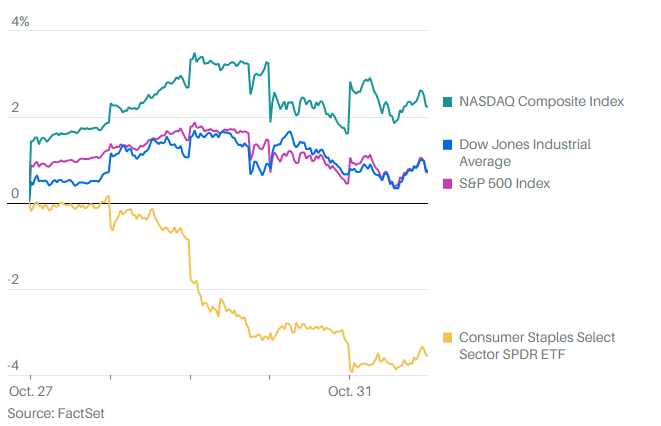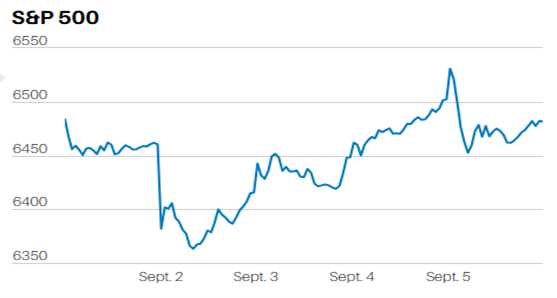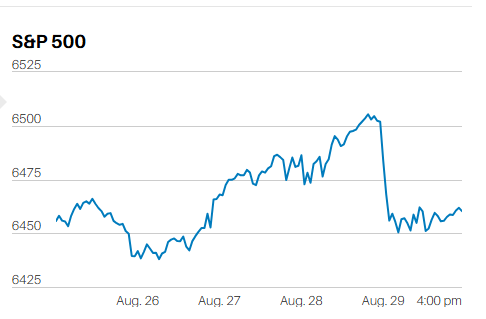
IS YOUR RETIREMENT IN TROUBLE?
MARKET UPDATE
The S&P 500 rose 0.2% on the week to 3145.91. The market lost ground Monday and Tuesday. The S&P 500 bottomed around 3070 before rallying 2.44% in the final three days. The Friday jobs report was much stronger than expected and is getting the credit for the market’s recovery into the weekend. Maybe. Our money is on money creation as the continued cause for the upside bias in the stock market. It’s unlikely the market will do anything but move higher in the coming months given the $30 billion monthly infusions coursing through the financial system unless the economic data worsens substantially – a possibility that shouldn’t be completely discounted.
The jobs report was strong, showing a gain of 266,000 or about 100,000 more than the consensus forecast. Jobs gains were also revised upward by 41,000 for the prior two months. A strong report any way you slice it. However, jobs are also a lagging indicator with employment typically not peaking until two to three quarters after a recession has begun.
Furthermore, the GM strike ended in November with auto workers returning to their jobs. The reported job gains may be revised lower at some point. A rather tepid increase of just 83,000 in the separate survey of households provides some reason to think a downward revision to the payroll report may lie in our future.
The Federal Reserve meets this week and is expected to keep interest rates steady. The more pressing concern among institutional investors is whether the Fed will cut again in 2020. “Markets are still pricing in one final 25-basis-point cut sometime next year, but we guess that signs of a pickup in economic growth early next year will take that possibility off the table,” writes Paul Ashworth, chief U.S. economist for Capital Economics. (Notice the honesty in calling it a guess?)
On the other hand, there’s little expectation among economists of a rate hike in 2020. The Federal Reserve has been clear that it wants to see inflation higher, perhaps above 2% for an extended period, before it will consider tightening. Certainly, bonds aren’t signaling a pickup in inflation yet. The 10-year is at 1.84% with the two-year at 1.65%. The yield curve is no longer inverted. It’s still flat and still indicating weak growth with no inflation on the horizon. In fact, the Inflation-Protected Treasury market is predicting that inflation will remain at 1.69% for the next 10 years, near its lows excluding the Great Recession deflation scare. The 5-year breakeven number is currently 1.59%, also near its lows excluding the Great Recession. All of which means there’s little expectation that the Federal Reserve will raise interest rates any time soon. It also means there’s little expectation of a significant pick up in the U.S. economy any time soon. After all, stronger growth would likely lead to rising inflation given the 50-year low in unemployment. Of course, wage-push inflation isn’t something the Fed would willingly tolerate for long. Continued weak growth may keep inflation low, but it poses a risk to the U.S. stock market in 2020. The market is at record highs and is expensive; continued weak economic growth is not going to make investors overly eager to continue buying the market.
INFLATION IS COMING
We wrote about inflation and the debt last week. We’re going to continue writing about inflation for the next few weeks because it’s coming back with a vengeance…eventually. We will almost certainly experience a period of high inflation at some point over the next twenty years. It will cause heartache and pain for an entire generation of retirees. Got your attention? Good.
I had a conversation with a friend a few weeks ago. It became apparent that he’s planning his retirement around no inflation. He and his wife are in the process of retiring. They hope to be completely out of the workforce by 2021 at the latest. Although he’s a friend, he’s not the type of friend that shares his financial situation in any real detail. I’ve had to piece together his thought process about retirement over the last few years as we’ve talked about the economy, the capital markets, Social Security, Medicare, and any number of other topics having to do with retirement. The comment he made to me recently, a comment that felt like the last piece of the puzzle, was “if you save enough you can just buy CDs and you’ll be fine.”
My interpretation of that comment was, “Hey, I think I’ve saved enough that I don’t need to invest in the stock market. I can just buy a Certificate of Deposit (CD) ladder out to five years and avoid the volatility and risk inherent in the stock market.” Okay, that’s a lot of interpretation based on, “if you save enough you can just buy CDs and you’ll be fine”, but I know the guy well. He’s extremely risk-averse. He’s got most of his money in his house and the bank. Finally, he’s sat out the longest-ever bull market in our history-making it unlikely he’s going to put a portion of his retirement portfolio into stocks in retirement.
What’s the problem with his plan?
Inflation is the problem. He’s retiring at 58 (wife 56) and is hoping to spend thirty years collecting interest on CDs while forgoing any real return on his portfolio. It might work if he has saved enough to meet all of his spending needs without requiring a real return on investment (return minus inflation) and inflation stays low. There’s almost no chance of it working if we experience five or six years of rising general price levels that culminate in mid to high single-digit inflation. The banks won’t raise CD rates fast enough to compensate for the lost purchasing power my friend will experience in a rising inflation environment. Remember when Treasury bonds were called Certificates of Confiscation? Right, no one else does either.
We expect that sometime in the next few decades people will remember. After all, the Federal Reserve is on record stating that they want an average inflation rate of 2% over a business cycle. Higher inflation is coming because the government needs inflation to help it pay down the mountain of debt it’s accumulated over the last 15 years. An inflation shock sometime in the next few decades will almost certainly require my friend to change his investment strategy to include stocks. I only hope he realizes it before it’s too late.
Regards,
Christopher R Norwood, CFA
Chief Market Strategist











